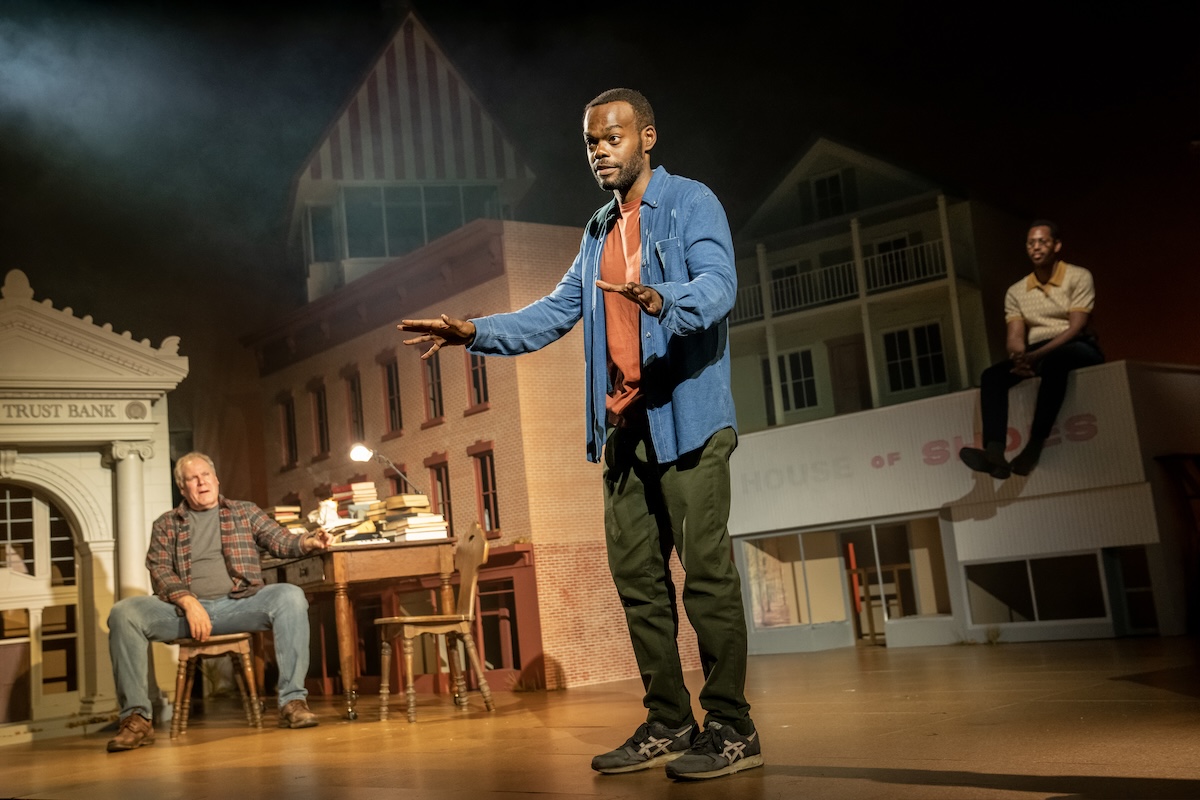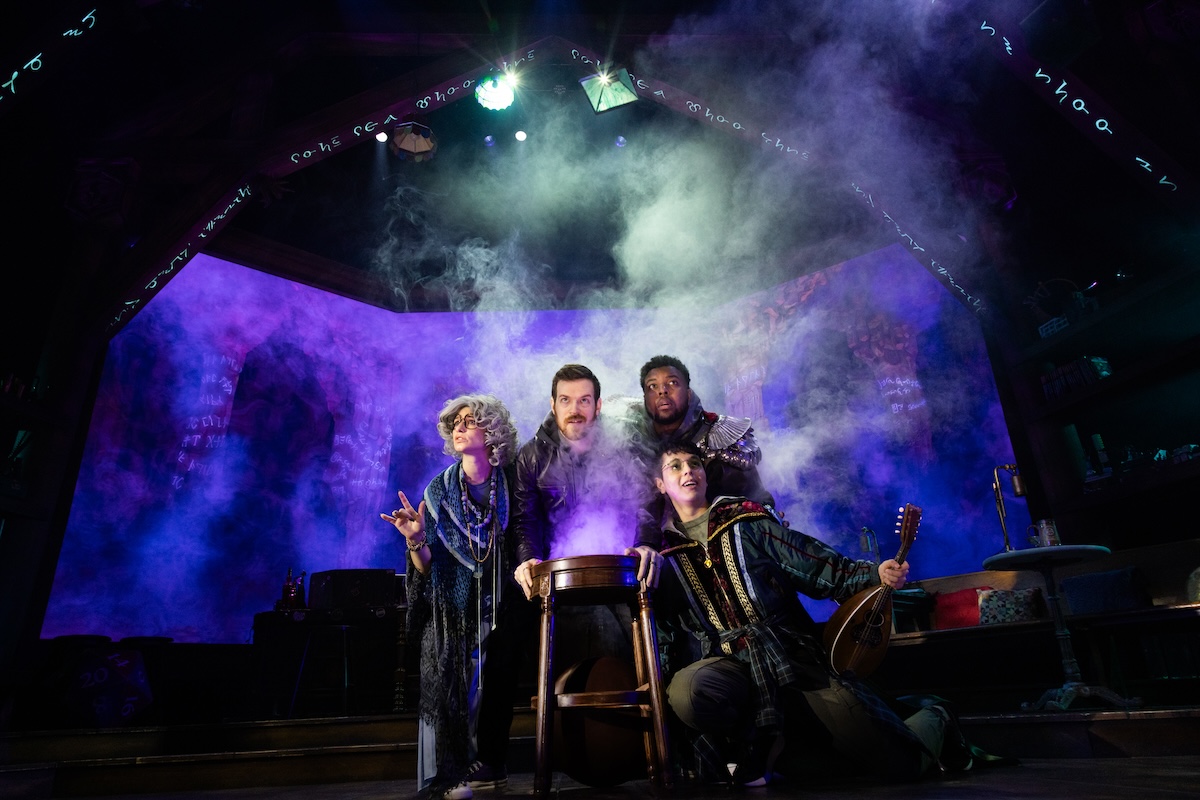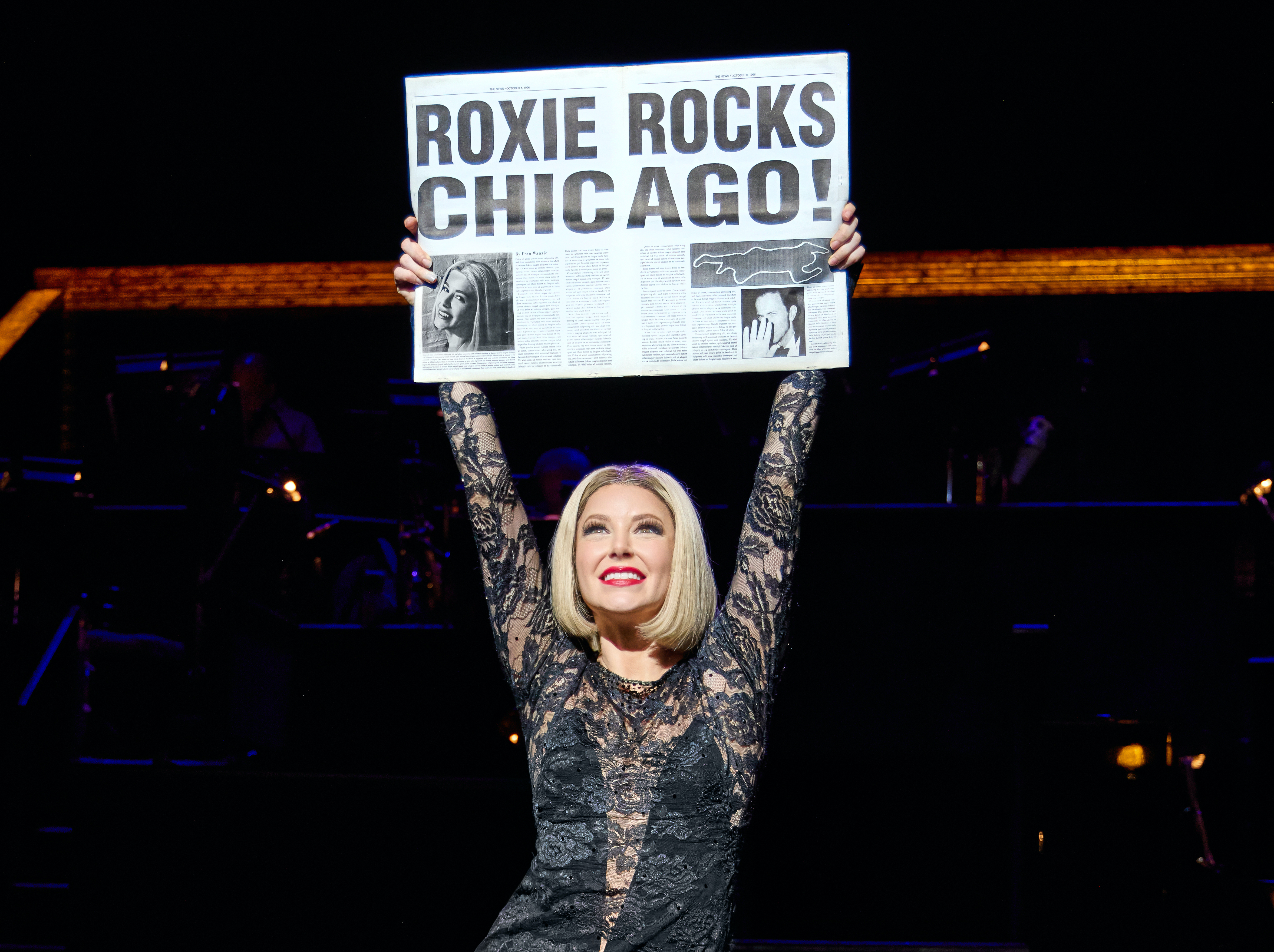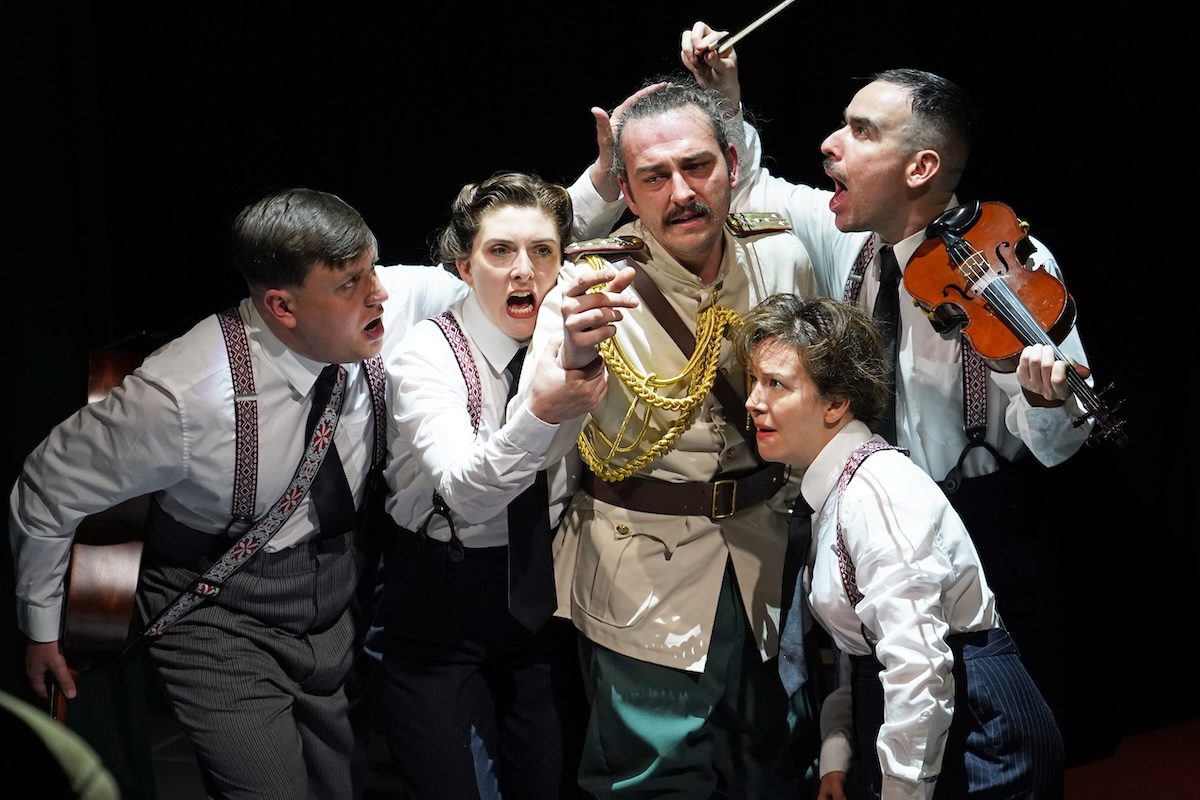Revolution in the Elbow of Ragnar Agnarsson Furniture Painter

(© Carol Rosegg)
The prospect of overnight wealth hasn’t lost its allure these six years after the global financial crisis, when we all should have realized that get rich quick is an empty promise for 99 percent of us. Of course, as Ívar Páll Jónsson’s timely (if somewhat incomplete) musical shows, the prospect of being in the elusive 1 percent drives many of us to make some terrible choices.
Despite having an impossible-to-remember title, Revolution in the Elbow of Ragnar Agnarsson Furniture Painter rests on an unforgettable premise: Everything we see takes place inside the body of a schlubby Nordic man in a white mesh tank top. (Projected on the back wall of the theater, Agnarsson shifts listlessly on a couch as we enter the house.) His rotund body substitutes for Earth, and Robert Redford plays the part of God. (Agnarsson has a fondness for Redford’s films, shadows of which flash across his eyes to the wonder of the denizens of his body, like Plato’s allegory of the cave.) As far as heavy-handed allusions are concerned, it’s a rather harsh repudiation of the immense importance with which we endow life on our tiny rock.
Peter (Marrick Smith), Alex (Graydon Long), and Stein (Brad Nacht) are three brothers from Elbowville, a lobster-producing backwater settlement. When Peter invents a “prosperity machine” that prints cash, Mayor Manuela (the hilariously serious Cady Huffman) sees an opportunity to catapult Elbowville to immense wealth by lending this illusory money out to Elbowvillians and other people all over Ragnar Agnarsson. Everyone becomes instantly rich and happy through the magic of easy credit. That is, until a (conspicuously British) bank examiner named Mandrake (Rick Faugno), hailing from a far more powerful part of the body, arrives in Elbowville to reevaluate their credit rating.
This thinly veiled allegory about the 2008 financial collapse (specifically as it relates to island microstates with overleveraged banking sectors, like Jónsson’s native Iceland) offers a fair mix of “aha” moments and eye rolls. By definition, it oversimplifies an incredibly complicated global calamity, making it more accessible while losing sight of nuance. Yet for all its fairy-tale trappings, Revolution in the Elbow is not a completely anarchic morality tale about the evils of global finance capitalism: A vaguely fascist lobster emblem hangs above the stage, hinting at what might take the place of Peter and the other empty neoliberal suits once the “revolution” is complete.
Jónsson captures this ambivalence in his habitually melancholy alt-rock score (which began as a concept album before receiving its world premiere staging here). Minor chord progressions take us through much of the story, with a steady bass as its beating heart. It is often spine-tingling, especially when paired with Lee Proud’s frenetic choreography of sharp elbows and hairpin pivots. This talented ensemble brings life to the music and moves with consistently committed performances. Bergur Ingólfsson’s deft direction ensures that this truly bizarre story is never confusing or unclear, that we accept Ragnar Agnarsson on its own terms.
In the revolutionary colors of black and red, the whimsical costumes by Hrafnhildur Arnardóttir and Edda Guđmundsdóttir further illuminate the world of Elbowville. Simple garments cede to couture silhouettes, the type you need a black American Express card just to touch. The impressive projections by Petr Hloušek are a constant presence, helping to both set the tone and move the story forward. Sadly, that story begins to stall out in the last 10 minutes of this two-hour-20-minute affair, leaving the audience with a rather inconclusive ending.
Perhaps the final moments seem unfinished because the inspiration for Jónsson’s story is only half played out. The ramifications of the 2008 financial collapse (the persistence of too-big-to-fail banks, the reemergence of the far-right in Europe, the ever-increasing general distrust of institutions) are still taking shape. Revolution in the Elbow may not have all the answers, but it offers a good jumping-off point for discussion, set to a truly excellent score.










